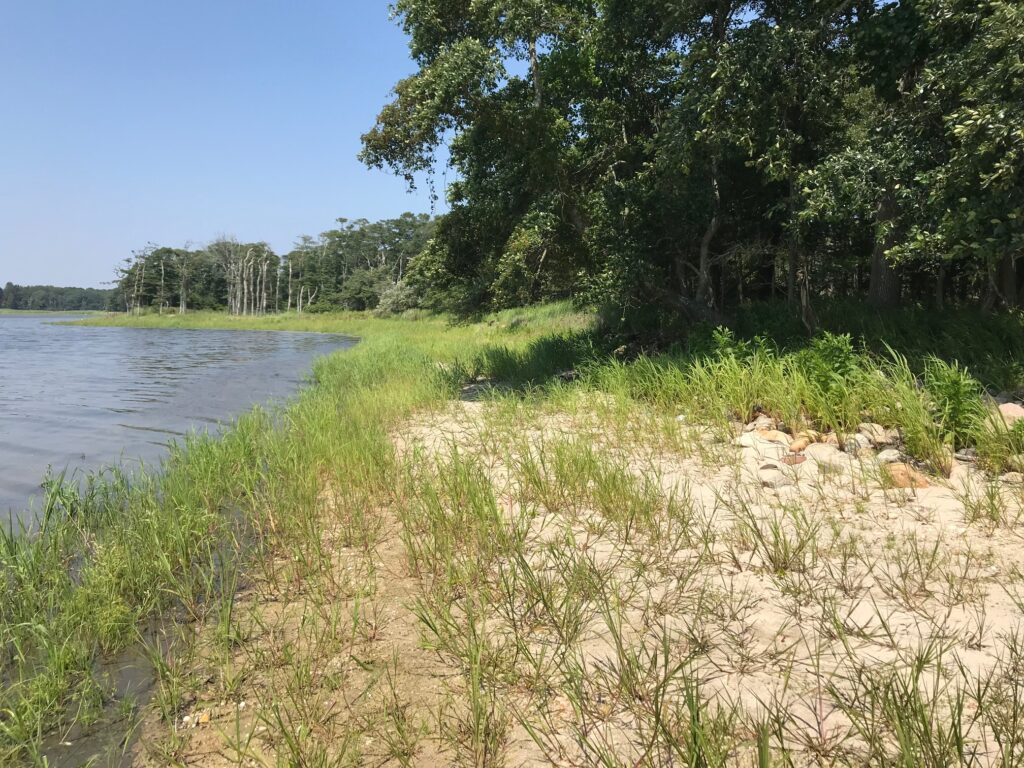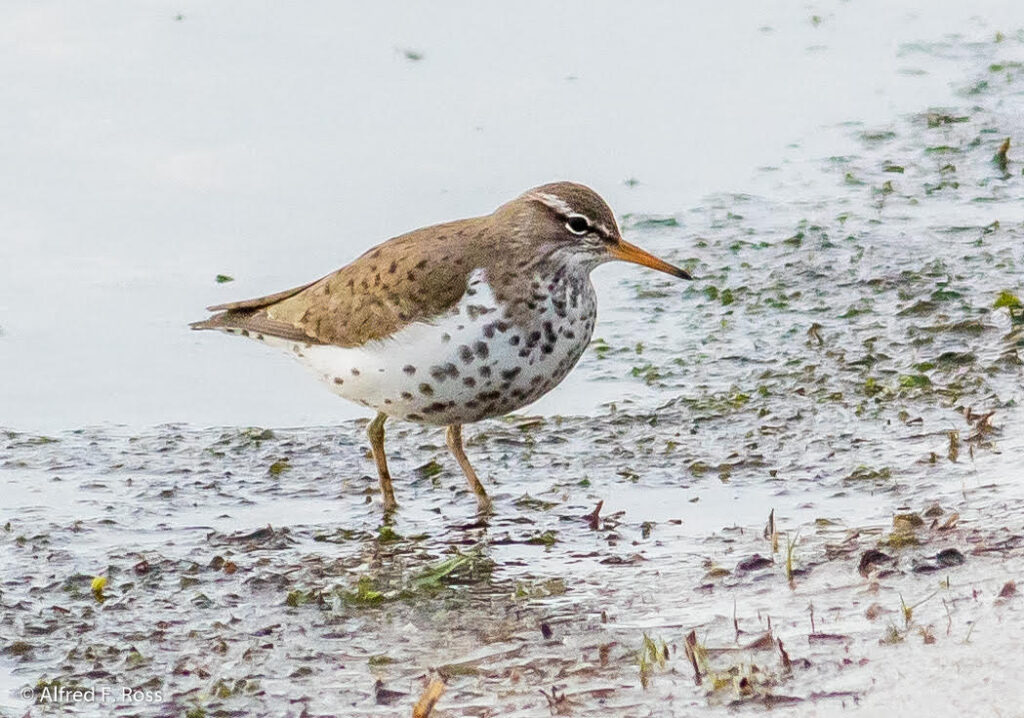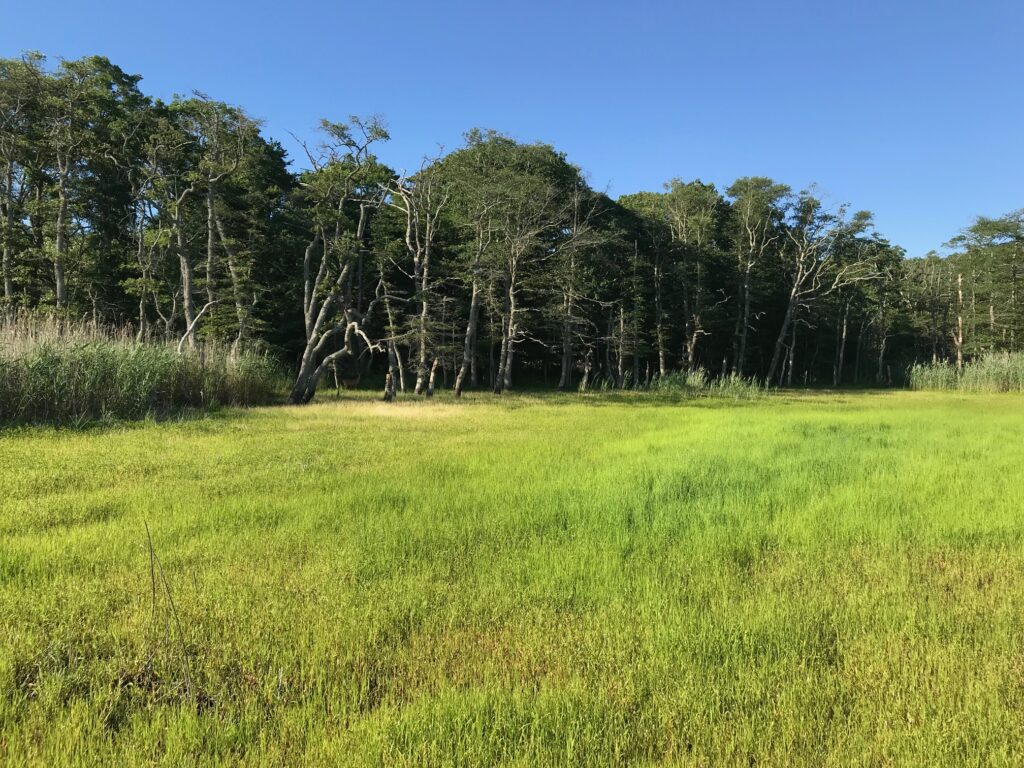The Georgica Pond Gut was opened by the East Hampton Town Trustees on October 22, 2018 and closed naturally on July 25, 2019—nine months later. During this time the pond became a tidal lagoon, except for 3 weeks in March when the Trustees had the pond closed to facilitate the sand dredging project. This may be the longest documented opening of the pond ever. Old East Hampton Town Trustee records and records kept by the late Donald Petrie don’t list any openings lasting this long. Back in 1987, the pond stayed open for 120 days and in 2015 it stayed open for several months, but openings of these durations are rare.
What did we learn?
The gut did meander, but interestingly, never got too close to either the west or east side of the pond and was never an erosion threat to neighboring property.
During the time the pond was open, salinity of course was very high and the twice daily tidal flushing kept the pond water quality high. Salt water species such as blue mussels and sea lettuce colonized the pond. Toxic blue-green algae levels were extremely low because these organisms cannot tolerate high salinity. The continued tidal flushing with ocean water kept levels of other phytoplankton (single-celled algae) and nutrients low, but also allowed seaweeds and macroalgae attached to the bottom of the pond to grow to a higher level than in past years. The high salinity may have also helped to keep Phragmites, the common reed grass, in check for a while.

With the pond so low for such an extended time, many interesting plants were able to colonize the exposed shoreline. This shoreline also provided outstanding feeding habitat for wading birds and shorebirds (Photo of Spotted Sandpiper). Brackish and freshwater species survived at the north end of the pond and the snapping turtles are still plentiful. Dr. Brad Peterson of Stony Brook University’s SOMAS sampled the pond in June and found all the typical species of fish such as sticklebacks, silversides, white perch and blue crabs. He’ll be back in September to re-sample when the pond is closed and brackish.

When the pond is full, groundwater backs up and raises the water table in the surrounding land and wetlands. The Gobler Lab groundwater monitoring wells showed that groundwater levels dropped by several feet compared to prior years, but also showed that groundwater was flowing into the pond at a higher rate than prior summers. Some of the most obvious evidence of this relationship was the dry cellars and the drying out of small ponds nearby.

What to look for
The pond is now steadily filling. This is great news for boaters who are getting an opportunity to sail, kayak and paddle on the whole pond. The Gobler Lab is keeping a careful eye on the blue-green algae levels which also may rise as the salinity decreases. Hopefully, we will get through the summer without a toxic algae bloom. High water temperatures, low salinity and high nutrients can lead to trouble.
Does this represent the future?
With sea level rise, some have asked if this is what the future will be like at Georgica Pond. Will the higher sea level keep the gut open longer or even permanently? The value of longer openings to the pond’s ecology is a critical question that all stakeholders at the pond need to address. These questions remain to be answered, but whatever the long-term trend, Georgica Pond remains a dynamic ecosystem which is vital to our community.
